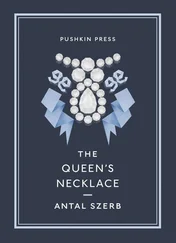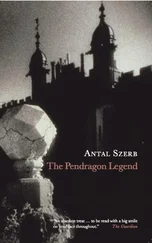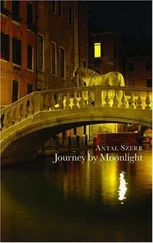Antal Szerb - Love in a Bottle
Здесь есть возможность читать онлайн «Antal Szerb - Love in a Bottle» весь текст электронной книги совершенно бесплатно (целиком полную версию без сокращений). В некоторых случаях можно слушать аудио, скачать через торрент в формате fb2 и присутствует краткое содержание. Год выпуска: 2013, Издательство: Pushkin Press, Жанр: Классическая проза, на английском языке. Описание произведения, (предисловие) а так же отзывы посетителей доступны на портале библиотеки ЛибКат.
- Название:Love in a Bottle
- Автор:
- Издательство:Pushkin Press
- Жанр:
- Год:2013
- ISBN:нет данных
- Рейтинг книги:5 / 5. Голосов: 1
-
Избранное:Добавить в избранное
- Отзывы:
-
Ваша оценка:
- 100
- 1
- 2
- 3
- 4
- 5
Love in a Bottle: краткое содержание, описание и аннотация
Предлагаем к чтению аннотацию, описание, краткое содержание или предисловие (зависит от того, что написал сам автор книги «Love in a Bottle»). Если вы не нашли необходимую информацию о книге — напишите в комментариях, мы постараемся отыскать её.
and
.
Love in a Bottle — читать онлайн бесплатно полную книгу (весь текст) целиком
Ниже представлен текст книги, разбитый по страницам. Система сохранения места последней прочитанной страницы, позволяет с удобством читать онлайн бесплатно книгу «Love in a Bottle», без необходимости каждый раз заново искать на чём Вы остановились. Поставьте закладку, и сможете в любой момент перейти на страницу, на которой закончили чтение.
Интервал:
Закладка:
Marcantonio Sant’Agnese, who was born in 1561, stepped easily into the possession of wealth, grand titles and princely self-confidence. Of his infancy and youth nothing is known, from which we can infer that he went through all the formative childhood experiences that scholars of the period would consider typical, though none left any discernible mark on his character. As a young nobleman he is known to have played a role both at the papal court and in the diplomatic machinations of the Roman aristocracy, and to have taken part in intrigues prior to papal elections. He forged a treaty with the Duke of Modena, negotiated an alliance with the Viceroy of Naples, took money from the wife of the Catholic Spanish King for working against the rather more Christian-like King of France, and from the King of France for working against the King of Spain… In a word, he was active in all the usual historical and political manoeuvrings of his time.
Such political dealings were conducted in this period partly through protracted and highly secret negotiations, including offers of bribes, and partly by the staging of grand parades and other public spectacles. From detailed contemporary reports we know, for example, that Marcantonio was involved in the procession of unparalleled brilliance arranged in honour of Hassan Bey, the Christian convert half-brother of the Prince of Tunis. Three liveried retainers bearing the huge family coat of arms led the way. Next, robed as Neptune and riding on a camel, was a herald holding aloft an embroidered silk banner depicting the martyrdom of St Agnes. Then came two soldiers, dressed as Moors in chains, followed by two knights in armour. These last carried a banner stretched out between them, printed with the words of a sonnet proclaiming that once the heathens had murdered St Agnes, but now they came to worship her — the point being that Hassan Bey had been received into the Church in Sant’Agnese dei Tre Torri, by none other than Matteo Sant’Agnese, the bishop-uncle of our hero.
There followed twenty noble members of the ducal court, on horseback, with lances at the ready, each lance bedecked with a little olive-green flag, and the heads of the horses and knights all resplendent with huge ostrich feathers. Next came the Duke himself, dressed from head to toe in olive-green brocade, as was his horse, down to its hoofs, with the famed Sant’Agnese jewels, fabulous emeralds, visible below the feathers on its head. Apart from the ring and the legendary clasp pinning the three olive-green ostrich feathers of such fantastic size to his cap, the Duke never wore jewellery himself. This was to signify his contemptus mundi , a fashion newly imported from Spain. His own horse and those of the courtiers in the line ahead had reinforcements of pure gold attached over the usual iron shoes, loosely, so that most of them would drop off during the procession, to the delight and advantage of the Roman populace.
In the footsteps of the Duke trundled a huge theatre-cart of the sort that you can still see in the carnival at Nice today. Drawn by four fully dressed horses, it represented the temple of the goddess Bellona, Marcantonio being a strong believer in military glory. In front of this classical-style temple rose a pyramid composed variously of lances, cannonballs and the decapitated heads of Turks. Behind it stood four women in immense hooped skirts embroidered with olive-green quivers, and wearing gold-embroidered headdresses. These were Bellona’s attendants. The age could not imagine any ladies of stature, whether human or divine, without (even in their more intimate moments) an accompanying flock of attendants.
Inside the temple, the Goddess herself, in the person of Imperia Ottomini, sat enthroned. She was robed alla antica , that is to say, rather scantily, to display her splendidly ample curves. Ladies at this time were much given to dressing up as classical deities, reasoning that as such they could afford greater pleasure to onlookers than would be possible in contemporary costume, which covered the person completely, apart from the face, and revealed nothing of the beauty of the female form. Hence Imperia Ottomini, enthroned as the Goddess of War. But neither she nor the Duke wished to present too grim or uniformly martial an aspect, and what emerged from her quiver was not arrows but little artefacts made of sugar, which she held out to a child and a tiny Maltese terrier standing in front of her. The banner above this scene proclaimed: The Blessings of Warfare .
Love played a large part in the life of Marcantonio Sant’ Agnese, that is to say, the love he bore to Imperia Ottomini. No doubt there were other liaisons too, but about those history is silent — in contrast to some fairly lively accounts of his relations with Imperia, which certainly did leave their mark in the pages of historical scholarship.
Imperia was the wife of a nobleman called Guiliano Ottomini. This Ottomini was a member of the Duke’s innermost circle. He made frequent journeys as his diplomatic representative, and in time became the chief overseer of all his domains. From which it clearly follows that he was not in the least troubled by his wife’s intimate relations with his employer, and no doubt took the same gentlemanly and accommodating line with her children, all of whom carried the Duke’s blood in their veins. Which makes it all the more surprising that in 1589 the Duke had this useful and extremely tolerant man murdered. This event is recorded in many sources, consistent in every important detail.
One night Ottomini, who was in Rome, was visited by a messenger on horseback, sent by Marcantonio to summon him urgently to Cortemiglia. The nobleman leapt onto his steed and set off at once. A few streets down the road, near the ill-lit Teatro Flavio, six desperadoes who had been lurking behind a corner leapt out in front of him, fired their pistols at him, then repeatedly stabbed him as he lay wounded. The papal police rushed to the sound of the shooting, and raced off after the killers. Three of them managed to take refuge in the palazzo of the Spanish legation, where they could not be pursued any further, since it enjoyed diplomatic immunity. But three were caught, among them the popular mountain bandit Luca Perotti, who was generally known to be in Sant’Agnese’s pay. The papal court sentenced the three men to death and, once it became clear that Sant’Agnese would make no objection, carried out the executions. A huge crowd followed Perotti on his last journey, and listened with deep emotion as he confessed his sins on the scaffold, in splendid verses, which he sang.
The reasons for this murder can be only surmised, and then very tentatively. There might possibly have been serious disagreements between the Duke and his steward over the accounts, as Konrad Schneyssen argues in his mighty tome Einführung zur Geschichte der päpstlichen Neffen (An Introduction to the History of Papal Nepotism ), but that seems rather unlikely, since all the signs are that up to the very moment of his tragic death Ottomini enjoyed his master’s complete confidence and continued to carry out important assignments on his behalf. It is also difficult to imagine that after so many years he, for his part, would suddenly begin to disapprove of his wife’s conduct. We ourselves — though, in the total absence of hard fact, this is mere conjecture based on the way people thought at the time — would hazard the view that the murder of the unfortunate Ottomini was another example of Marcantonio’s gallantry towards Imperia, a sacrificial offering made by her lover. There is no doubt that Imperia was a very demanding lady, and the Duke did not stint in offering testimony of his passion, showering the woman he loved with jewels, estates, sonnets penned by his own fair hand and portraits of her; and when he could think of no other way to offer even greater witness of his adoration, he had her husband murdered, as proof for her and the whole world of the unquenchable and boundless force of his passion. The fair Imperia seems to have accepted this extreme manifestation of his love, for not long afterwards she finally moved into the Duke’s palazzo, and remained his loyal companion to the end of his days.
Читать дальшеИнтервал:
Закладка:
Похожие книги на «Love in a Bottle»
Представляем Вашему вниманию похожие книги на «Love in a Bottle» списком для выбора. Мы отобрали схожую по названию и смыслу литературу в надежде предоставить читателям больше вариантов отыскать новые, интересные, ещё непрочитанные произведения.
Обсуждение, отзывы о книге «Love in a Bottle» и просто собственные мнения читателей. Оставьте ваши комментарии, напишите, что Вы думаете о произведении, его смысле или главных героях. Укажите что конкретно понравилось, а что нет, и почему Вы так считаете.











